
Most of us in the digital marketing game have had no formal education in SEO.
We didn't take college courses on linkbuilding.
Or earn master's degrees in Google algorithm sciences.
Yet here we are.
We're masters of self-education.
It's hard to be your own teacher, but it's made easier by others sharing their SEO knowledge freely on the internet.
In the process of my own SEO work, I've learned a lot about uncovering new opportunities for backlinks—a valuable practice known as link prospecting.
That knowledge is what I'm here to share!
Building links can be divided into two broad categories: link prospecting and converting opportunities into links.
Yeah, you can't just start building links out of nowhere. There needs to be a separate step for research and preparation. This will help you build a higher volume of higher-quality links—in less time.
Sounds like a lot of work, but those who want rain must also accept the mud.
I’m not really sure if this is the perfect analogy but any successful linkbuilding campaign requires thorough link prospecting to get off the ground.
This article will guide you through prospecting for links that up your SEO game, help you rank and increase traffic to your website.
What Is Link Prospecting?
Simply put, link prospecting is the process of identifying relevant backlink opportunities for your website.
There are many places where you can find these opportunities:
- Google itself
- Your competitor’s backlink profile
- Twitter and other social media profiles
- Quora and other Q&A forums
- Guest posts on relevant blogs
- Industry directories
- etc.
However, before you start searching for linking opportunities, you should identify your target keywords and a few other things.
The Anatomy of a Link Prospecting Query: 3 Elements to Include in Your Search
A Google link prospecting query can be easily broken down to three main parts:
- The Keyword
- The Advanced Search Operator
- The Footprint
Combining these three effectively should allow you to find multiple opportunities for backlinks.
1. The Keyword
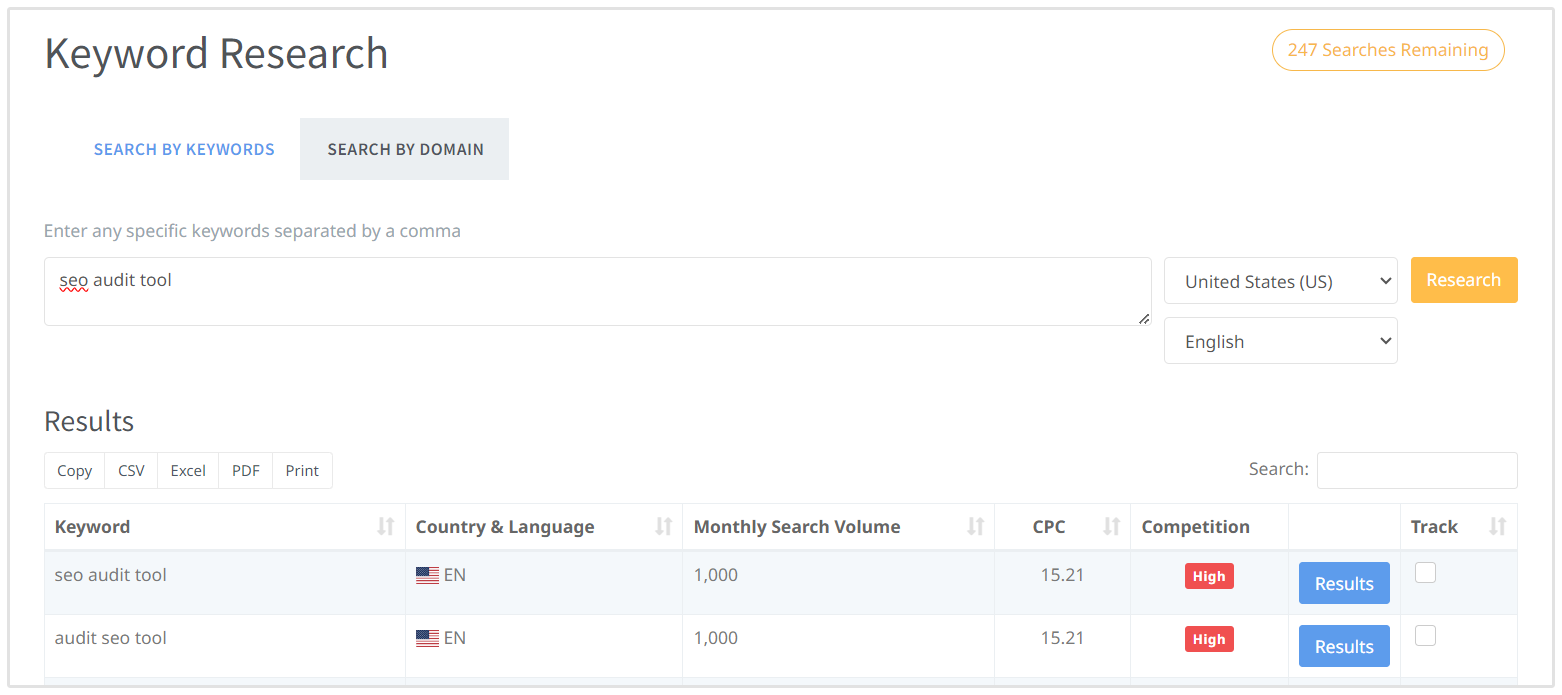
Knowing which keywords to target is the first step towards a successful linkbuilding campaign.
You might think that keywords and backlinks are unrelated, but that's absolutely not the case.
Every backlink should be tied to a target keywords of yours.
In fact, your chances of even finding relevant linking opportunities hinges on your ability to identify the right keywords.
But it's a little bit different from your usual keyword research. You can go broad. For link prospecting, choose broad keywords that define your industry or your market.
Where you build your links doesn't have to be a perfect match for your particular niche. You just have to share the same broad industry interests.
Instead, choose the keywords you wouldn’t normally target with a PPC campaign because they're too crowded and ambitious.
They're...
- the words the market/industry uses to describe themselves.
- common names for the practitioners in your industry (e.g. SEOs, digital marketers).
- shorter phrases or single words (not longtail) so they're very crowded and competitive.
- the words used in online magazines and publications within your market.
- keywords that bring in a lot of traffic but few sales because there's no buyer intent.
For example, someone covering SEO/digital marketing topics should target keywords such as “seo,” “digital marketing” and “social media” for link prospecting rather than salesy keywords such as “buy seo tools” or "seo services."
If you don’t have access to any paid tool, I'd recommend using Neil Patel's ubersuggest.io. Enter in a keyword that defines your industry and sort the results by volume. Move from the highest to lowest and take note of any keywords that you think are a good match.
A simple search in Ubersuggest using the keyword “digital marketing” helped me identify the following keywords:
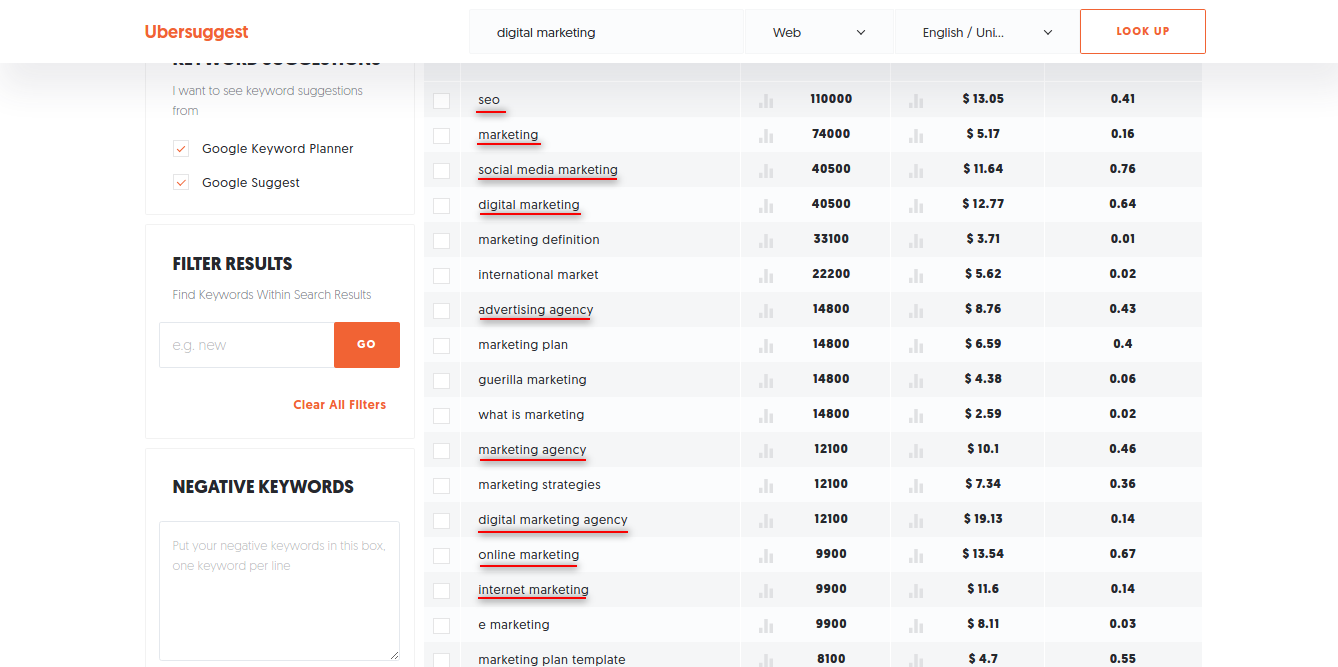
You've chosen these keywords because they'll help you uncover more relevant opportunities for linkbuilding.
Now, let's go uncover those.
2. The Advanced Search Operators and Queries
The best place to find link opportunities is Google. It's free and simple, but it's also the most powerful link prospecting tool.
In the end, your link prospecting goals are all about ranking in Google. Showing Google that you're trusted by other websites and worthy of high SERP positions.
To get the most success out of link prospecting in Google, you should be familiar with a few advanced search operators that will greatly increase your searching powers:
Inurl: This search operator will allow you to find results that contain a specific keyword in the URL, be it the domain name or the slug.
Intitle: Similarly, the intitle search operator returns results that contain a specific keyword in the title of the page.
Site: This search operator can be used for a variety of purposes. You can filter results to only show sites that have a specific TLD. For example, site:.edu will only return results that have a .edu extension.
Or you can use this to return results from a specific site. site:seoptimer.com/blog will return results only from the SEOptimer blog.
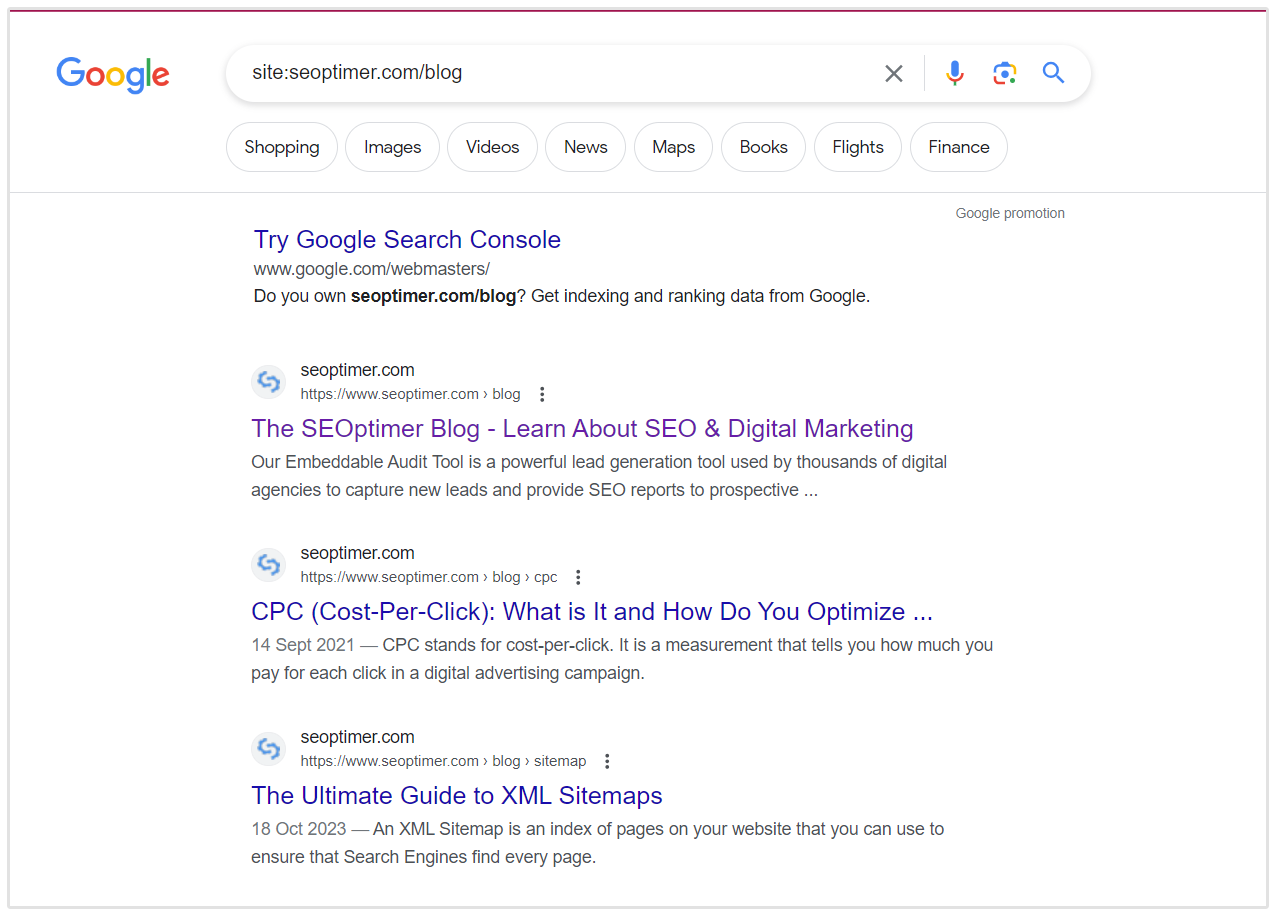
This is particularly useful when you want to check if a site has covered a topic previously before pitching them for a guest blogging opportunity.
For example, when I combine site:seoptimer.com/blog and "Link Building," I turn up a blog post about link building best practices as the first search result.
Now that you're familiar with the advanced search queries, you're almost ready to create your own link prospecting query.
But there's one more element of a link prospecting query that you need to know about.
The footprint.
Link prospects often have a common footprint depending on the type of link you'll be building.
This footprint is right in the content, title or URL of the page. Once you're able to identify the footprint, you'll know exactly how to make an effective link prospecting query.
3. The Footprint
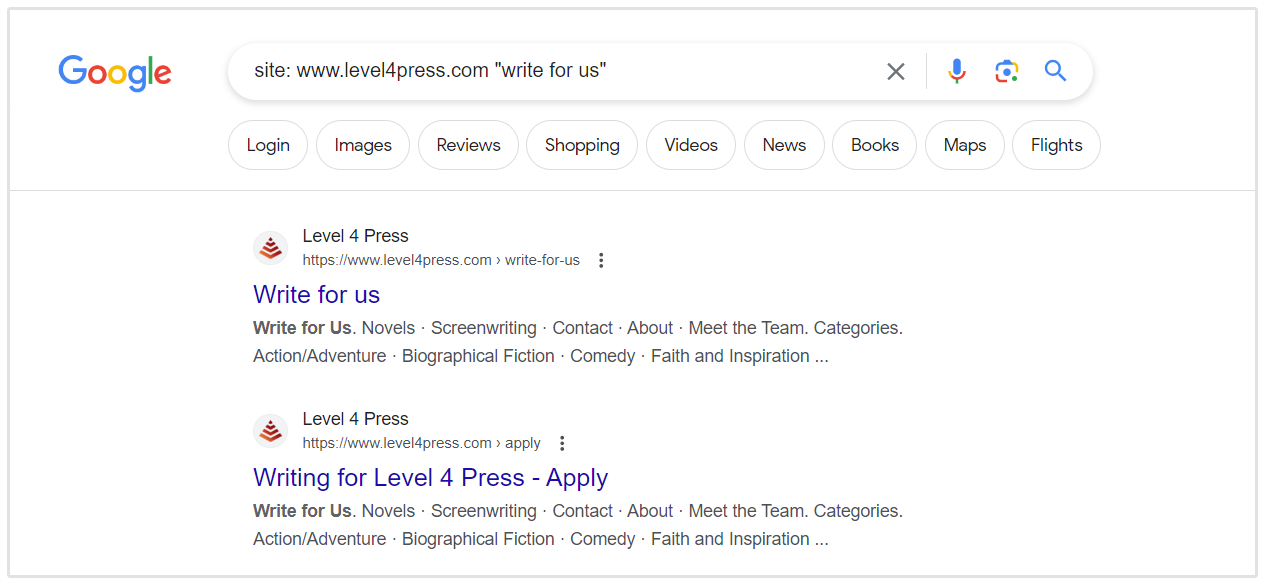
A few examples of commonly-used link prospecting queries are:
To find guest blogging opportunities:
- keyword intitle:“write for us"
- keyword intitle:“contribute to"
- keyword inurl:“write-for-us"
To find resource linkbuilding opportunities:
- keyword inurl:“resources"
- keyword inurl:“links"
To find niche directories:
- "keyword Directory"
- "keyword Websites"
- keyword “suggest * url"
If you're looking for something more detailed, OptimizeSmart put together a list of 10,000 search queries to help you with link building.
With all of this information, you're ready to search for any link prospect!
Now, we'll put this into practice to seek out some specific types of link prospects.
Specifically, we'll uncover two very common types of link prospects: competitor backlinks and list resources.
How to Prospect Links from Competitor Backlink Profiles
When I was starting out, analyzing competitor backlinks was one of my favorite linkbuilding strategies.
However, I've begun to realize that replicating the backlinks of my competitor isn’t always possible.
In many scenarios, your competitors will have a very personal connection to each link. For example, they might have hosted an event which led to a lot of media coverage, or they might have even paid for a link.
Getting these links to your website isn’t always a viable—or cheap!—option.
But on the other hand, totally ignoring your competitor’s backlinks is definitely a mistake. Sifting through your competitor’s link profile can have a couple of benefits.
First, and most obviously, you can identify links which can be easily built.
These links, which can be thought of as low-hanging fruit, can be niche/location-specific directories, company profiles, business listings and so on. Not only that, you can come across sites where your competitor has been a guest author.
Secondly, you can uncover your competitor’s linkbuilding strategy.
By identifying the type of sites that link to your competitor and finding the pages on your competitor’s site that attract the most links, you can see what's working for your competitor and what's not.
Also, you can see what type of content attracts the maximum links, or the highest-quality links, and what content doesn't attract much.
So, let's find some competitor links!
1. Finding Your Competitor’s Links
If you have a completely fresh website, start out by searching for your competitor’s brand name in Google. The first 30 results should be enough.
This will help you find websites that are preferred by Google, as evidenced by their being at the top of the SERPs, and that have listed or mentioned your competitor.
Pro Tip: Search in Google using the format in the image below. The results will exclude your competitor’s own website.
Competitor's Brand Name -site:competitorwebsite.com
Here's an example for Branded3:
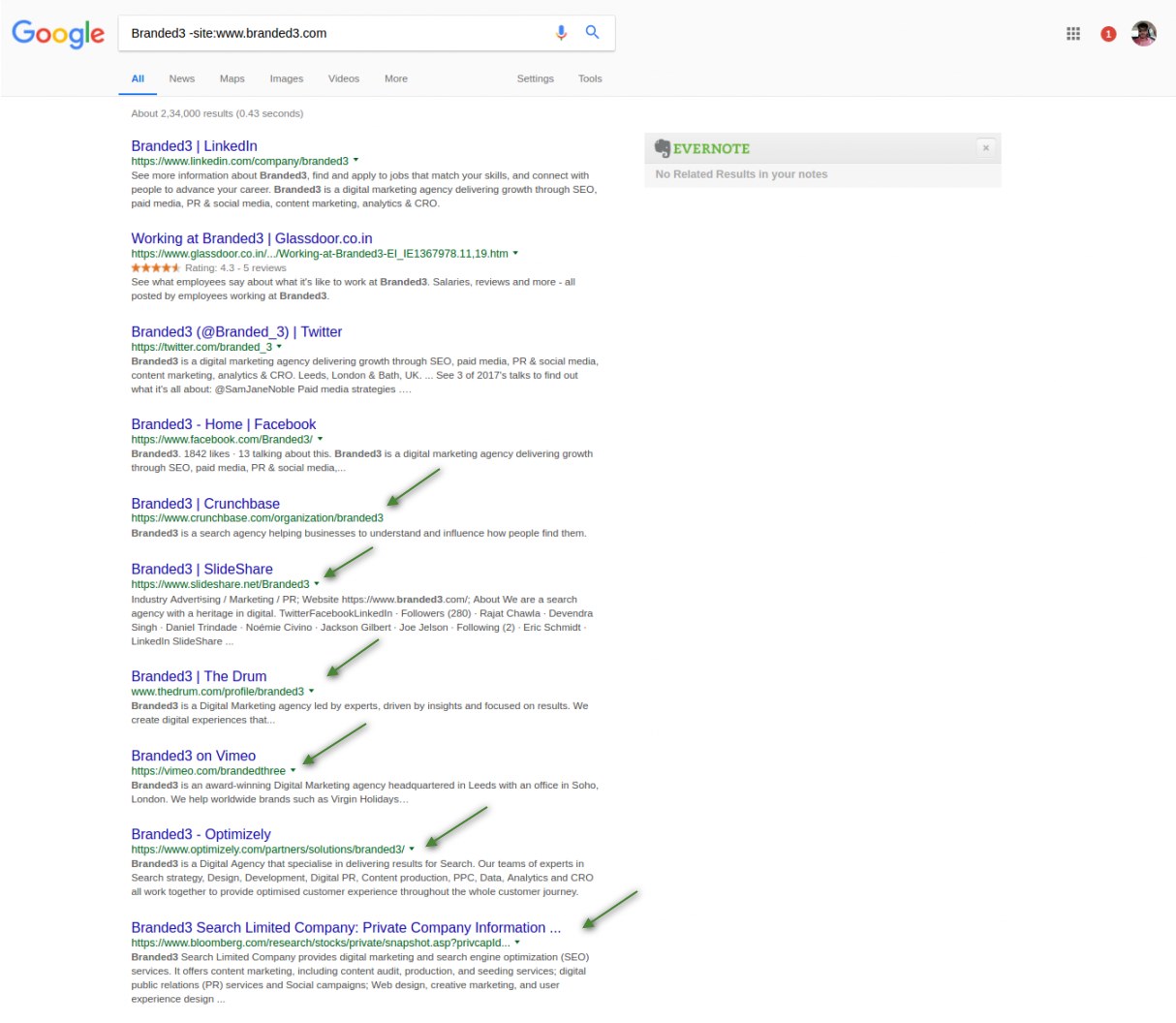
Keep track of all the best opportunities in a spreadsheet somewhere.
Once you're done with the basics, and have scoured Google for top results, it's time to bring the big guns out. There are some powerful tools that can help with link prospecting, without costing the earth.
First, fire up your favorite backlink checker. I’ll be using the SEOptimer's Free Backlink Checker tool.
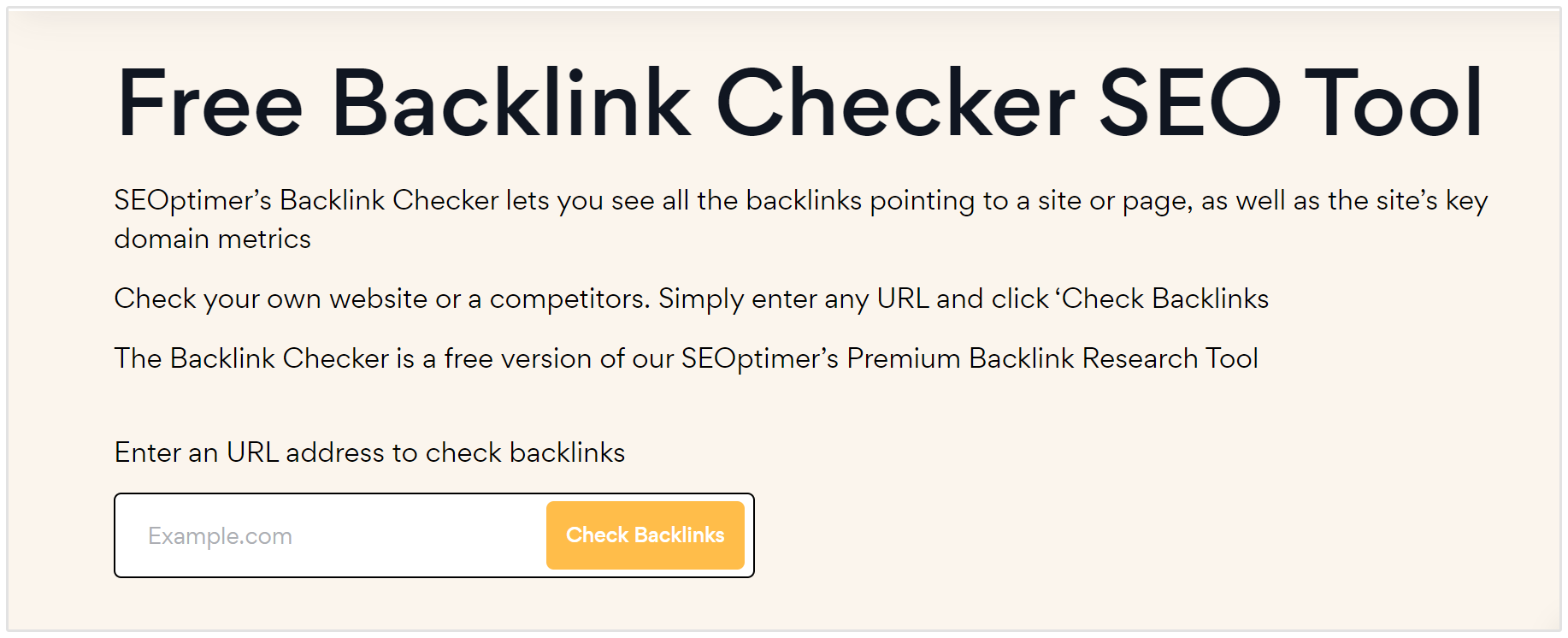
It's as simple as entering your target competitor website and clicking on Check Backlinks.
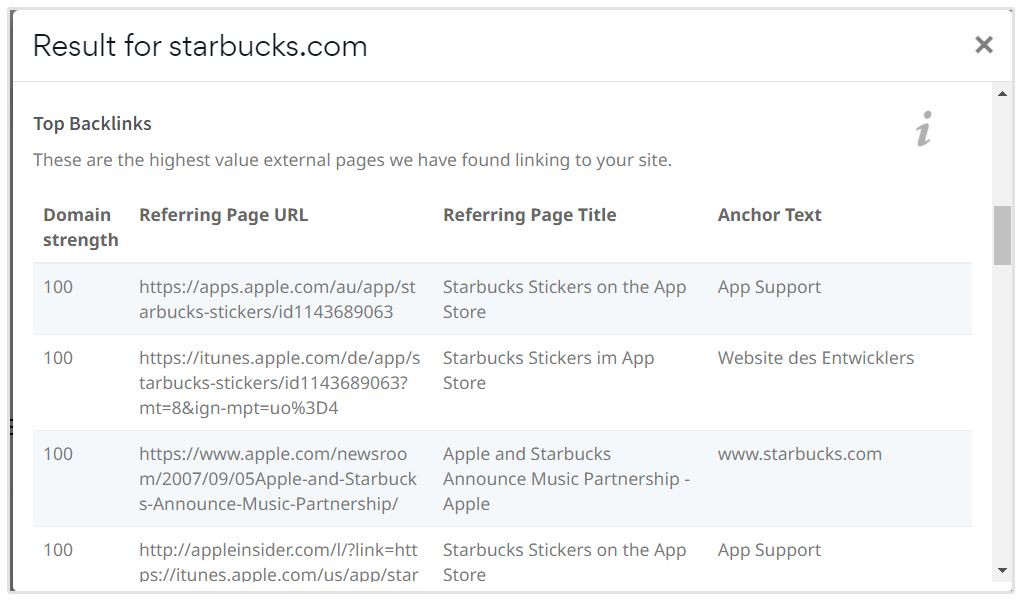
You'll get the 300 best links, and with only one link per domain.
This is a good way to look at a variety of sites linking to your competitor, rather than looking at hundreds from the same domain.
You should also go over the new backlinks that your competitor is acquiring. This will show you what linkbuilding strategy your competitor is currently implementing.
If you're dedicated to link prospecting, the best strategy for this is to sign up for a full SEOptimer account so you'll always be notified when your competitors gain a new link (you can try it out with a free trial here).
Finally, see which of their pages have acquired the most (and most impressive) links. This can give you an idea of what type of content is currently working and which sites are readily linking to that content.
How to Do List Link Prospecting
Even if you have used each of those previously mentioned 10,000 queries and investigated every single one of your competitor’s backlink profiles, there still remains a treasure of backlink opportunities for you to explore.
The best part? You won’t even to work super hard to find those opportunities.
Most industries have websites that curate a list of the top [blank]. For example, the best blogs, best publications or even the best companies in that industry (topseos.com anyone?).
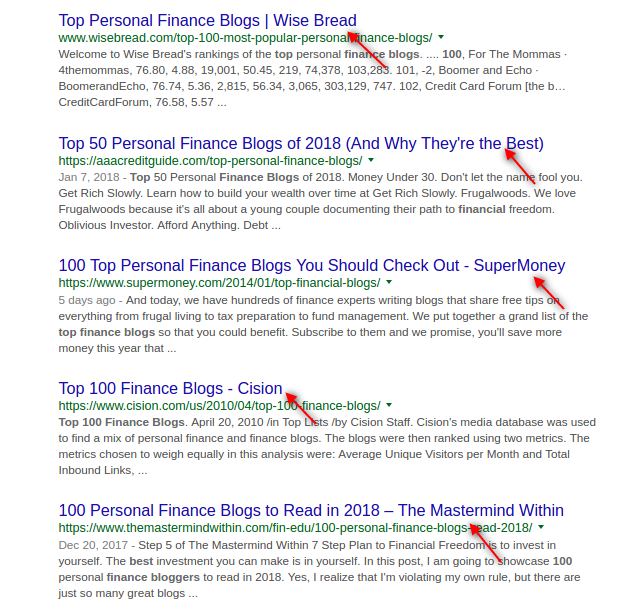
If you play it right, these blogs and publications can turn into linking opportunities to you. Just focus on two “easy” things: the content and the pitch.
First, here's how to find the right list.
How to Prospect List Link Opportunities
Finding these blogs isn’t a tough job. You just have to get creative and logical with your searches.
Searches which will definitely work are:
List of [keyword/industry] websites
List of [keyword/industry] blogs
Top 100 [keyword/industry] blogs
Top 100 [keyword/industry] websites
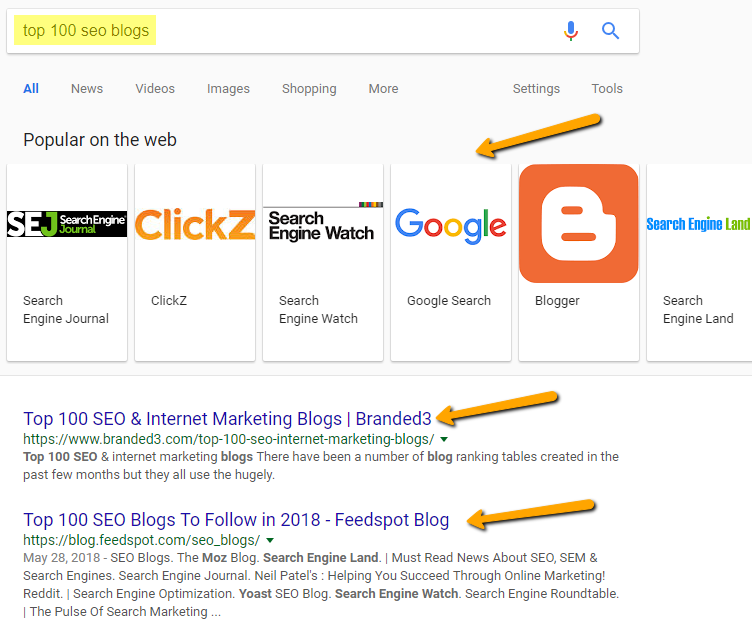
You can also use a keyword research tool if you're having trouble finding these lists.
Don’t just stop at one list. Combine them all and remove the duplicates to get a really thorough list of link prospects.
How to Qualify Link Prospects
Once you think that you have enough link prospects (you’ll never have enough) and have sourced them to a spreadsheet, you should qualify the quality of your prospects.
You should also see whether those prospects match with your available, linkable assets.
Knowing the difference between a good and bad potential link is necessary before pursuing a link prospect.
Look for Keyword Occurrences
Start by determining the relevance of your link prospects by checking for occurrences of keywords in certain elements of the page. These elements are:
URL of the page
Title
<h1>
If your market/industry keywords + keywords that define the link opportunity occur in one or more of these elements, then that's usually a positive sign of relevance.
For example, if you're looking for resource pages, then having the keyword “resource” in the URL/title or <h1> of the page is a good sign. Once you have determined relevancy, set these pages aside for manual review later.
Metrics to Track
With Google having discontinued updating PageRank and the rise of third-party tools that have their own metrics, it can be quite tough for link builders to choose the metrics to track.
Here's a brief introduction to some of the important metrics to track:
Domain Authority (DA)
This Moz metric is calculated by considering multiple factors such as referring domains, total number of links, MozRank and numerous other factors. Basically, higher the Domain Authority of a website, better the chances of it ranking.
Page Authority (PA)
Similar to Domain Authority, Page Authority is the ranking strength of a single page.
You can see the PA and DA of a website by installing the MozBar or through the Open Site Explorer—or by checking the site in SEOptimer.
![]()
Citation Flow (CF)
This metric by Majestic is a measure of the popularity of a link, calculated by gauging the number of sites linking to a URL.
Trust Flow (CF)
Based more on quality than quantity, Trust Flow is a measure of the quality of sites linking to a URL. A higher Trust Flow means that a URL has authoritative, trustworthy backlinks.
Domain Rating (DR)
This metric by Ahrefs is a measure of the strength of a domain’s overall backlink profile.
URL Rating (UR)
Similar to Moz’s Page Authority, Ahrefs’ URL Rating by is the strength of a target URL’s backlink profile.
Referring Domain
A domain from which a site is being linked to. A URL is more authoritative if it has a high number of referring domains, i.e it's being linked to from multiple websites.
Social Shares
The number of times a website/URL has been shared on social media, be it Facebook, Reddit, Twitter, LinkedIn, Pinterest, etc.
.A high number of social shares usually indicates that the website has an engaged audience. Getting a link from such a site can result in a bucket load of traffic for you.
While it will probably be time-consuming to keep a track of all these metrics, you should have a look at a combination of these before deciding on pursuing a link prospect.
Another possible metric to keep in mind is the traffic that a website gets. The best links are usually those which actually end up driving traffic.
If you want to speed up this process, you can use a tool like SEOptimer, which will allow you to easily check many of the above metrics, among others, for a set of link prospects.
How to Get the Contact Information of Link Prospects
Once you're done with identifying potential linking opportunities, it's time to reach out. Successful outreach depends on two things: finding the email addresses of your link prospects and your pitch.
You can find most email addresses by using an email lookup service Voila Norbert or Hunter. These services offer you a limited amount of searches for free. A dedicated link builder or agency will probably require a paid plan. Also, here's a post about finding anyone’s email address.
All your hard work will amount to nothing if your outreach isn’t effective. Personalize your emails as much as you can. Read this article for a list of email outreach templates.
Link Prospecting Wrap-up
Admittedly, link building is hard. However, being able to find relevant backlink opportunities can make that a tad bit easy.
Knowing which prospects to target will have an impact on the content you create and your interaction with the community.
Link prospecting might be boring and time consuming, but it's surely one of the most important steps towards a successful linkbuilding campaign, and eventually, better rankings and more traffic.
And you'll start to feel much more excited about the process when you start seeing incredible results.
Now, get to prospecting!
There's gold in them thar hills.
Gurbir Singh is an SEO consultant and link builder. When he is not trying to appease the search engines, Gurbir likes to travel and read. Connect with him on Twitter if you have any questions regarding link building.










